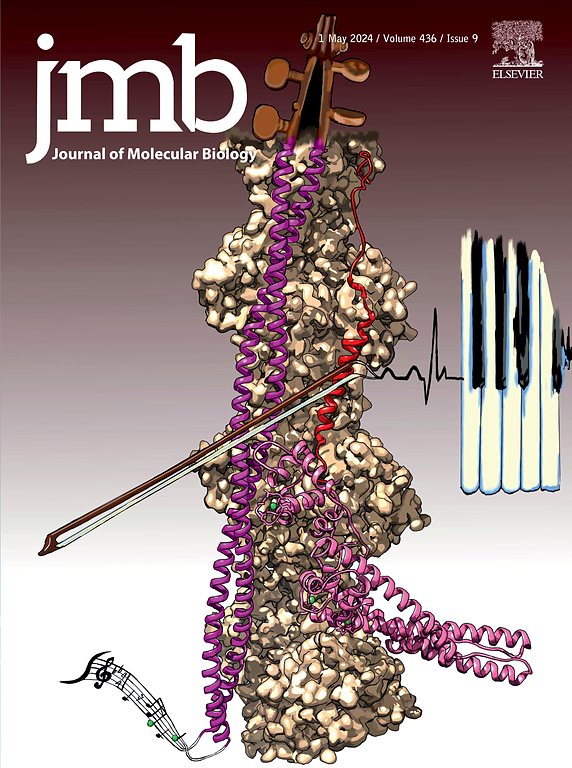Biophysical Aspect of Assembly and Regulation of Nuclear Bodies Scaffolded by Architectural RNA
IF 4.7
2区 生物学
Q1 BIOCHEMISTRY & MOLECULAR BIOLOGY
引用次数: 0
Abstract
A growing body of evidence suggests that nuclear bodies, condensates of RNAs and proteins within the nucleus, are assembled through liquid–liquid phase separation. Some nuclear bodies, such as paraspeckles, are scaffolded by a class of RNAs known as architectural RNAs. From a materials science perspective, RNAs are categorized as polymers, which have been extensively studied in soft matter physics. While soft matter physics has the potential to provide significant insights, it is not directly applicable because transcription and other biochemical processes differentiate RNAs from other polymers studied in this field. Therefore, an interdisciplinary research fusing molecular biology and soft matter physics offers a powerful approach to studying nuclear bodies. This review introduces the biophysical insights provided by such interdisciplinary research in the assembly and regulation of nuclear bodies.

结构RNA支架核体组装和调控的生物物理方面。
越来越多的证据表明,核体,rna和细胞核内蛋白质的凝聚体,是通过液-液相分离组装的。一些核体,如旁斑,是由一类被称为建筑rna的rna构成的。从材料科学的角度来看,rna被归类为聚合物,在软物质物理学中得到了广泛的研究。虽然软物质物理学有可能提供重要的见解,但它并不直接适用,因为转录和其他生化过程将rna与该领域研究的其他聚合物区分开来。因此,融合分子生物学和软物质物理学的跨学科研究为研究核体提供了一个强有力的途径。本文介绍了这些跨学科研究在核体组装和调节方面提供的生物物理学见解。
本文章由计算机程序翻译,如有差异,请以英文原文为准。
求助全文
约1分钟内获得全文
求助全文
来源期刊

Journal of Molecular Biology
生物-生化与分子生物学
CiteScore
11.30
自引率
1.80%
发文量
412
审稿时长
28 days
期刊介绍:
Journal of Molecular Biology (JMB) provides high quality, comprehensive and broad coverage in all areas of molecular biology. The journal publishes original scientific research papers that provide mechanistic and functional insights and report a significant advance to the field. The journal encourages the submission of multidisciplinary studies that use complementary experimental and computational approaches to address challenging biological questions.
Research areas include but are not limited to: Biomolecular interactions, signaling networks, systems biology; Cell cycle, cell growth, cell differentiation; Cell death, autophagy; Cell signaling and regulation; Chemical biology; Computational biology, in combination with experimental studies; DNA replication, repair, and recombination; Development, regenerative biology, mechanistic and functional studies of stem cells; Epigenetics, chromatin structure and function; Gene expression; Membrane processes, cell surface proteins and cell-cell interactions; Methodological advances, both experimental and theoretical, including databases; Microbiology, virology, and interactions with the host or environment; Microbiota mechanistic and functional studies; Nuclear organization; Post-translational modifications, proteomics; Processing and function of biologically important macromolecules and complexes; Molecular basis of disease; RNA processing, structure and functions of non-coding RNAs, transcription; Sorting, spatiotemporal organization, trafficking; Structural biology; Synthetic biology; Translation, protein folding, chaperones, protein degradation and quality control.
 求助内容:
求助内容: 应助结果提醒方式:
应助结果提醒方式:


